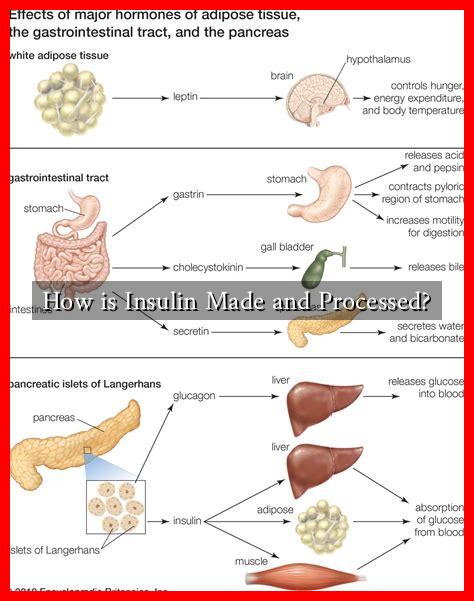-
Table of Contents
How is Insulin Made and Processed?
Insulin is a vital hormone that plays a crucial role in regulating blood sugar levels in the body. For individuals with diabetes, understanding how insulin is made and processed is essential, as it directly impacts their health and treatment options. This article delves into the intricate process of insulin production, from its natural synthesis in the pancreas to its manufacturing for medical use.
The Natural Production of Insulin
Insulin is produced in the pancreas, specifically in the beta cells of the islets of Langerhans. The process of insulin synthesis involves several key steps:
- Gene Expression: The insulin gene is activated, leading to the transcription of mRNA.
- Translation: The mRNA is translated into preproinsulin, a precursor molecule.
- Post-Translational Modifications: Preproinsulin undergoes enzymatic cleavage to form proinsulin, which is then converted into active insulin through further processing.
- Storage and Release: Insulin is stored in secretory granules and released into the bloodstream in response to elevated blood glucose levels.
This natural process is finely tuned to maintain glucose homeostasis. For instance, when you eat, blood sugar levels rise, prompting the pancreas to release insulin, which facilitates the uptake of glucose by cells for energy.
Insulin Structure and Function
Insulin is a peptide hormone composed of 51 amino acids, arranged in two chains (A and B) linked by disulfide bonds. Its primary function is to lower blood glucose levels by:
- Promoting glucose uptake by muscle and fat cells.
- Inhibiting glucose production in the liver.
- Facilitating the storage of glucose as glycogen.
Understanding the structure and function of insulin is crucial for developing effective diabetes treatments, as any alteration in its production or action can lead to serious health complications.
Manufacturing Insulin for Medical Use
The demand for insulin has led to the development of various manufacturing processes, primarily through recombinant DNA technology. This method has revolutionized insulin production, making it more efficient and safer. Here’s how it works:
- Recombinant DNA Technology: Scientists insert the human insulin gene into bacterial or yeast cells, which then produce insulin as they grow.
- Fermentation: The modified microorganisms are cultured in large fermentation tanks, where they multiply and produce insulin.
- Purification: The insulin is extracted and purified to remove any contaminants, ensuring it is safe for human use.
- Formulation: The purified insulin is then formulated into various delivery methods, such as vials, pens, or pumps.
This biotechnological approach has led to the production of different types of insulin, including rapid-acting, long-acting, and premixed formulations, catering to the diverse needs of diabetic patients.
Case Studies and Statistics
The impact of insulin production on diabetes management is significant. According to the International Diabetes Federation, approximately 537 million adults worldwide are living with diabetes, a number projected to rise to 643 million by 2030. The availability of insulin has been a game-changer for many:
- In the United States, around 7.4 million people with diabetes rely on insulin therapy.
- Studies show that proper insulin management can reduce the risk of diabetes-related complications by up to 76%.
Moreover, advancements in insulin delivery systems, such as insulin pumps and continuous glucose monitors, have improved patient outcomes and quality of life.
Conclusion
Insulin is a critical hormone for maintaining blood glucose levels, and its production and processing are complex yet fascinating. From its natural synthesis in the pancreas to the innovative manufacturing processes that provide insulin for millions of diabetics worldwide, understanding these mechanisms is essential for both patients and healthcare providers. As technology continues to advance, the future of insulin production looks promising, with the potential for even more effective treatments and improved patient care.
For more information on diabetes management and insulin therapy, you can visit the American Diabetes Association.




